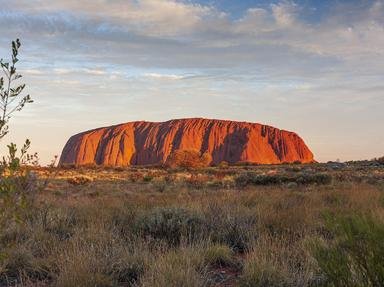Quiz Answer Key and Fun Facts
1. Your tour group is relaxing on a north Queensland beach when suddenly a blood-curdling scream breaks the silence. One of your companions wading through the surf is screaming in agony and clawing at their legs when they collapse on the beach. Red welts have risen over both legs and gelatinous strands cling to their skin. What creature has this unfortunate encountered?
2. In an attempt to avoid other jellyfish, another swimmer decides to exit the water via a rocky outcrop. As they clamber out of the shallows and onto the rocks they step on a well-disguised fish, a stonefish. As pain shoots through their body the ugly little fish swims away. What part of the fish has just injected venom into the swimmer?
3. Some distance down the beach and oblivious to all the dramas a small group is beachcombing, collecting some of the pretty seashells. There's a nice cone shell in the water, one of the group picks it up, but as they draw it from the water they receive a sharp jab in the hand from the shell's occupant. Pain and shock is followed by swelling, lack of co-ordination, and muscular paralysis. What type of creature lurking within the cowrie shell can deliver a poisonous jab?
4. Seeing his fellow travelers in distress one of your group grabs for a bottle of water he has left cooling in a rock pool. A sharp bite startles him as he sees a small octopus crawl away from beneath the bottle. The octopus glows with brightly coloured rings as it slips into a rock crevasse. Strangely the bite doesn't hurt in fact it's gone pleasantly numb. The neuromuscular venom isn't quite as enjoyable however and it is not long before the venom is blocking nerve conduction and sodium channels within the victim leading to motor paralysis and respiratory failure. What colour was this little octopus glowing?
5. Enough of the beach you decide. After alerting authorities and filling out the required paperwork the group head inland to continue your holiday. "They would have wanted it this way." Someone suggests. It's a long drive and as the sun begins to set you make camp by a fresh water billabong. Small freshwater crocodiles rest on rocky banks basking in the last rays of the sun. One of your party goes for a dip, laughing at the little crocs. "It's fresh water here." He says, "It's the salt water crocs you have to worry about." He looks surprised moments later when a huge salt-water crocodile grabs him and pulls him under. What method of attack will the crocodile use on its struggling prey?
6. Horrified by yet another attack your small group sits stunned around the campfire. One of the group, too distraught, wishes to be alone and wanders down a trail to gather their thoughts. But what's that rustling in the bushes? A screech from the bushes is answered by a scream from your companion. A huge bird leaps out from the bushes, its red wattle swinging and an ominous horny crown rising from its head. A quick slash from a vicious claw and your companion collapses to the ground. The bird rushes away screeching down the trail. What giant Australian bird would do such a thing?
7. The four survivors of your tour take advantage of the now spacious conditions of the bus and head into the dry outback. It's a long drive and you barely have time to pitch the tents and gather firewood before dark. As you fumble with the tent pegs you hear a yell. "Snake!" One of your companions hops into camp clutching their leg. As the rest of you argue over what to do, the victim begins to look decidedly unwell. Which of the many poisonous land snakes in Australia has the most toxic venom?
8. The following morning, after the burial, the three of you decide to head back to the city. Unfortunately you haven't travelled far when the bus hits a hole in the dirt track and comes to a grinding halt. It looks ruined, and wow, it sure is getting hot in the sun. A quick look at the map tells you the nearest town is 50 miles away. After drawing straws the loser sets off, as you and your companion wait nervously by the bus. A few days later, the local postman comes across you, and a few hours later you find the body of your friend. The postman suggests you should never leave your vehicle. Why?
9. After some unpleasant media attention the two of you hole up in a Sydney apartment. Too paranoid to go outside you order in pizza and watch cricket on the tv, wondering all the while if this game is capable of boring you to death. Your companion finally gives up and declares they're off to bed. Moments later they return clutching a foot and yelling. You see a big black spider crawl out of a discarded bunny slipper. The Sydney Funnelweb spider is unusual amongst spiders because it is the male that is the more dangerous.
10. You're on the next flight home. As the months and years pass by you slowly forget your traumatic trip to Australia. Your career is going well and the family are all fine. Things are good. Then one day you notice a mole on your back, and then another, and another. Were they there before? As you head to the doctor, and then the dermatologist, and then the oncologist it occurs to you that Australia has got you after all. Which form of skin cancer is the most dangerous?
Source: Author
quogequox
This quiz was reviewed by FunTrivia editor
Exit10 before going online.
Any errors found in FunTrivia content are routinely corrected through our feedback system.


